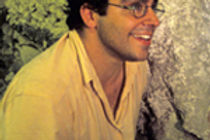Remote Sensing and Archaeology in the Maya Lowlands


2006- present
Dr. William Saturno, with the help and inspiration of Dr. Sever of NASA, has been using Landsat TM, IKONOS, and high-resolution STAR-3i SAR to locate ancient causeways, temples, and reservoirs. Dr. Saturno has found success refining supervised and unsupervised classifications on this high-resolution imagery.
LiDAR at Caracol, Belize
University of Florida
Drs. Arlen and Diane Chase have recently used LiDAR to help delineate site features within Caracol, Belize's largest archaeological ruin. The use of LiDAR has helped the Chases' to speed up work in a huge way.

2013
Archaeologists with the University of California, Santa Barbara working in El Pilar, Belize have recently used LiDAR to help with investigations. The use of LiDAR was instrumental in speeding up the survey process and helped the archaeologists to minimize impact to vegetation within the conservation area.
Dos Hombres to Gran Cacao Archaeological Project
2010-Present
Archaeological project in the northwest of Belize studying settlement patterns between two major Maya centers. Pedestrian survey has been bogged down by low hikes and heavy vegetation. This past field season, a UAV was used for some survey testing and proved useful in gaining new perspective. Proposals are underway for obtaining LiDAR over the survey area.
Present Work
As a result of initial investigations by Dr. Thomas Sever and his colleagues, there are many projects currently working with remote sensing in the Maya Lowlands. As sensors and data become less expensive and more available, archaeologists around the region are utilizing the data and technologies in planning, executing, and analyzing their archaeological investigations.
Many archaeologists are focusing on obtaining LiDAR data for their sites. The accuracy and intensity of LiDAR investigations is extremely enticing for archaeologists working in such a diverse environment trying to locate and delineate water, agricultural, subterranean, and architectural features amidst the limestone bedrock that populates the area. LiDAR helps to expose the greater patterns of occupation present within an area and can conduct a rigorous survey in much less time than it would take to conduct pedestrian survey. Just a few ongoing projects in the region:
